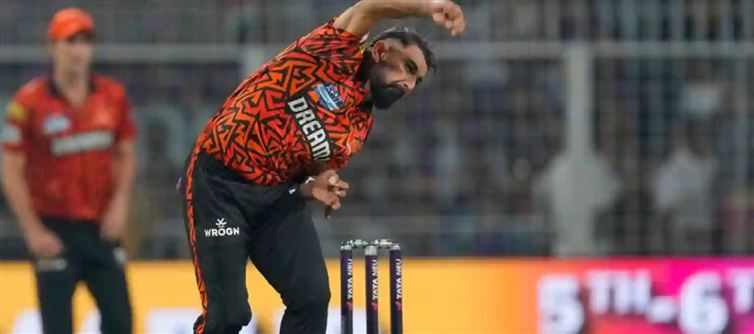
In the world of cricket, decisions made by captains and team management can often spark debates among fans, players, and pundits alike. A recent incident during an IPL match saw kolkata Knight Riders (KKR) captain, Pat Cummins, making an intriguing tactical move that left many scratching their heads: replacing mohammed shami with rahul Chahar before shami could complete his 4-over quota.
The Situation
It was a crucial match where KKR faced a tough challenge in the middle overs of the game. shami, who had been brought in to deliver key spells for his team, was initially showing signs of sharp bowling. However, as the game progressed, it became evident that the conditions and match situation required a shift in tactics.
Pat Cummins, who is known for his astute cricketing mind and leadership, decided to make a bold change. Instead of allowing shami to complete his full 4 overs, he called upon young spinner rahul Chahar to bowl in his place. This decision raised eyebrows, as it is not common for a bowler to be replaced in the middle of his over quota, especially when he hasn’t completed it yet.
The Strategy Behind the Decision
To understand the reasoning behind this change, it's essential to take a closer look at the factors that could have influenced Cummins’ decision:
1. Pitch Conditions and Match Situation
Cricket is a dynamic game where the conditions can change rapidly. The pitch at the venue may have been favoring spinners more than pacers as the match progressed. shami, despite being a seasoned bowler, may have found the surface unresponsive to his pace. On the other hand, rahul Chahar, known for his sharp leg-spin and ability to pick wickets in the middle overs, could have been seen as a better fit for the situation.
2. Tactical Substitution
IPL matches are fast-paced, and captains often need to think on their feet. Cummins may have recognized a shift in the game where the opposition was beginning to gain momentum against the pacers. By bringing in Chahar, who can offer control and variation through his spin, Cummins likely sought to break the rhythm of the opposition and create pressure in the middle overs. It’s a well-known tactic in t20 cricket to use spinners at key moments, especially if the opposition’s top-order is beginning to build partnerships.
3. Shami’s Struggles in the Middle Overs
Another aspect that might have influenced the decision could have been Shami’s performance in his initial overs. If he was struggling with accuracy or pace variations, it might have been prudent to give him a break and bring in someone else to bowl the key overs. shami, while an excellent bowler, could have been facing a challenging spell, and substituting him with rahul Chahar might have been a way to avoid overburdening him while also maintaining a balance between pace and spin.
4. Rahul Chahar’s Skillset and Recent Form
Rahul Chahar is renowned for his ability to turn the ball sharply and deceive the batsman, particularly in the middle overs. He has the ability to bowl economic spells and pick up wickets, something that could have been vital for KKR at that particular juncture in the game. His form in recent matches might have also played a role in the decision, with Cummins opting for a bowler in confidence who could turn the tide in their favor.
5. Captain’s Confidence in Rotation
Captains often make decisions based on the flow of the game, and sometimes, changes are made to inject fresh energy into the team. By replacing shami with Chahar, Cummins might have been looking to rotate his bowlers to maintain pressure while ensuring that all bowlers stay fresh for the later stages of the game. This could have been especially important if the opposition was targeting Shami’s overs or if the bowler was feeling fatigued.
Conclusion
While the decision to replace mohammed shami with rahul Chahar before shami had completed his 4-over quota may have seemed unusual, it was likely a carefully calculated move by Pat Cummins and the KKR management. cricket is a game of constant adaptation, and the ability to make quick tactical changes can often be the difference between winning and losing. In this case, Cummins opted for a strategic substitution based on pitch conditions, match dynamics, and the strengths of his bowlers. Although some might question the move, it’s a reflection of the modern game where captains are expected to take bold decisions to alter the course of a match.




 click and follow Indiaherald WhatsApp channel
click and follow Indiaherald WhatsApp channel